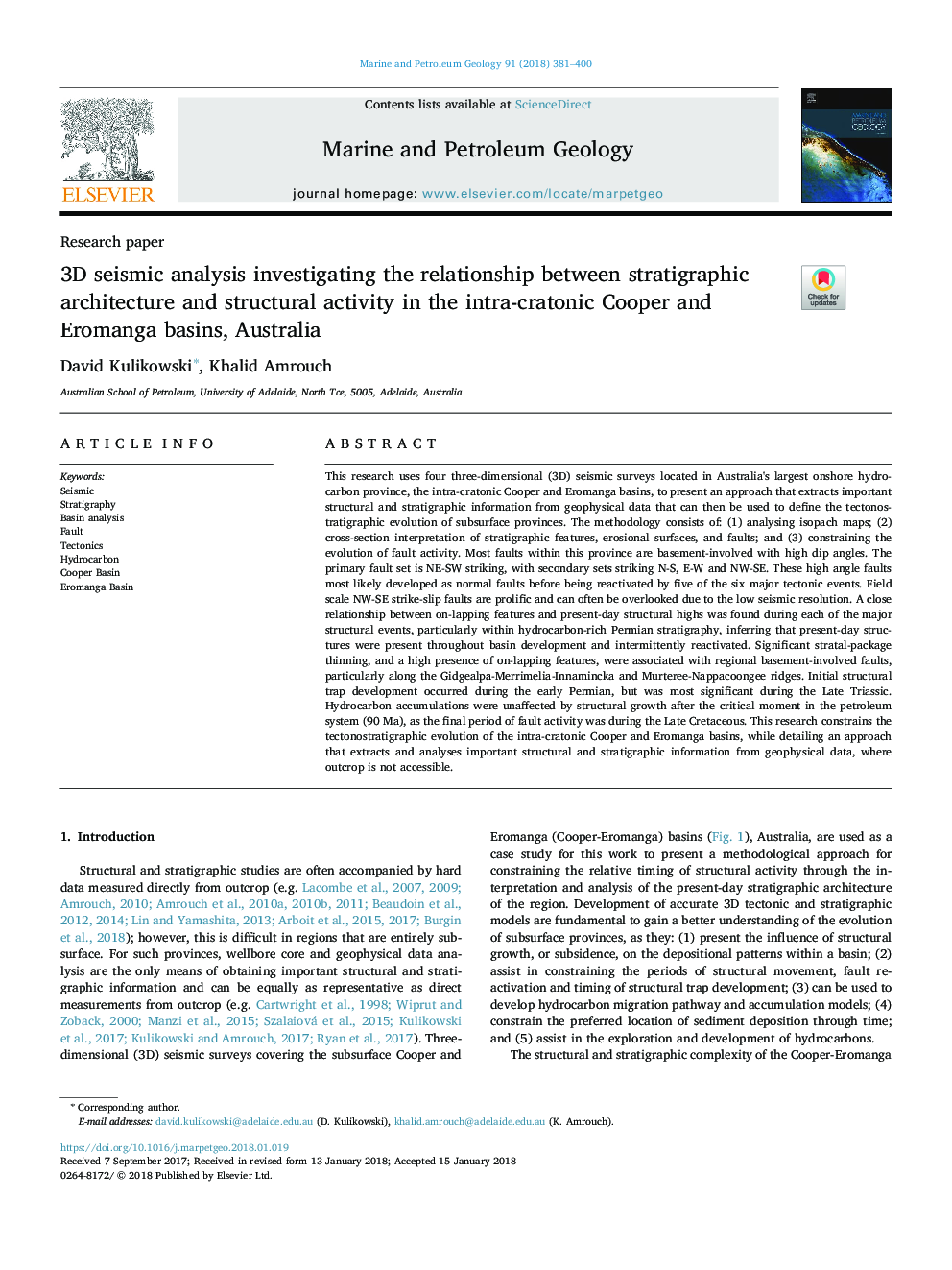| Article ID | Journal | Published Year | Pages | File Type |
|---|---|---|---|---|
| 8909196 | Marine and Petroleum Geology | 2018 | 20 Pages |
Abstract
This research uses four three-dimensional (3D) seismic surveys located in Australia's largest onshore hydrocarbon province, the intra-cratonic Cooper and Eromanga basins, to present an approach that extracts important structural and stratigraphic information from geophysical data that can then be used to define the tectonostratigraphic evolution of subsurface provinces. The methodology consists of: (1) analysing isopach maps; (2) cross-section interpretation of stratigraphic features, erosional surfaces, and faults; and (3) constraining the evolution of fault activity. Most faults within this province are basement-involved with high dip angles. The primary fault set is NE-SW striking, with secondary sets striking N-S, E-W and NW-SE. These high angle faults most likely developed as normal faults before being reactivated by five of the six major tectonic events. Field scale NW-SE strike-slip faults are prolific and can often be overlooked due to the low seismic resolution. A close relationship between on-lapping features and present-day structural highs was found during each of the major structural events, particularly within hydrocarbon-rich Permian stratigraphy, inferring that present-day structures were present throughout basin development and intermittently reactivated. Significant stratal-package thinning, and a high presence of on-lapping features, were associated with regional basement-involved faults, particularly along the Gidgealpa-Merrimelia-Innamincka and Murteree-Nappacoongee ridges. Initial structural trap development occurred during the early Permian, but was most significant during the Late Triassic. Hydrocarbon accumulations were unaffected by structural growth after the critical moment in the petroleum system (90 Ma), as the final period of fault activity was during the Late Cretaceous. This research constrains the tectonostratigraphic evolution of the intra-cratonic Cooper and Eromanga basins, while detailing an approach that extracts and analyses important structural and stratigraphic information from geophysical data, where outcrop is not accessible.
Related Topics
Physical Sciences and Engineering
Earth and Planetary Sciences
Economic Geology
Authors
David Kulikowski, Khalid Amrouch,
